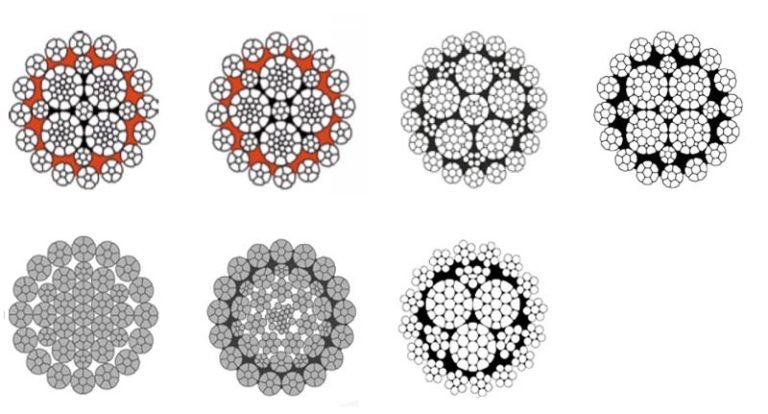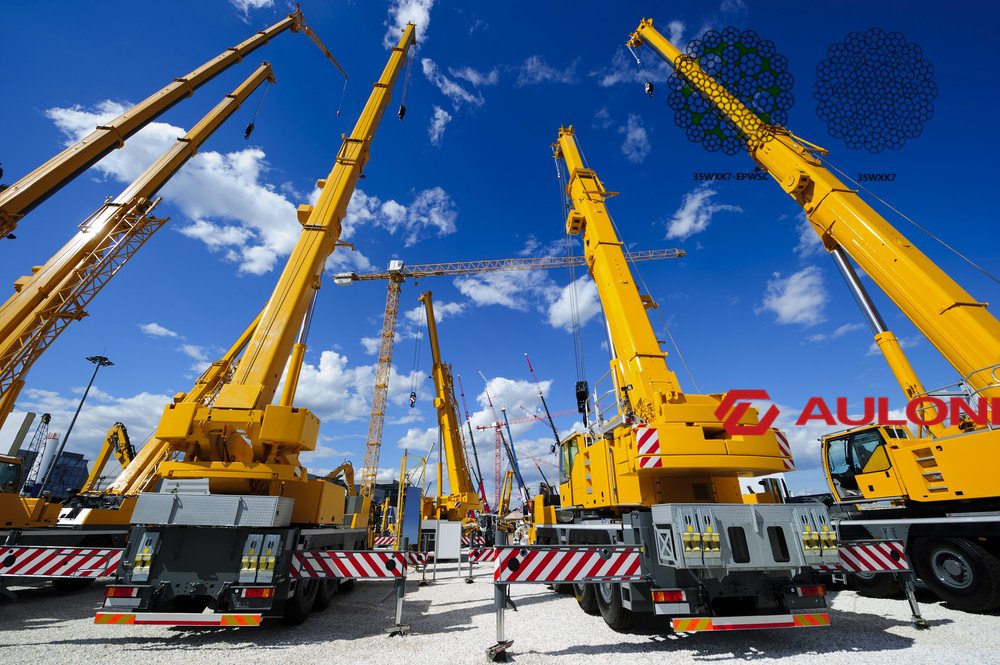Comprehensive Guide to Professional Storage of Wire Rope Slings
Proper storage of wire rope slings is essential for preserving their structural integrity, preventing premature wear, and ensuring they remain ready for safe and efficient use. Here’s a detailed, professional guide to best practices in wire rope sling storage:
1. Thorough Cleaning and Pre-Storage Inspection
- Dirt and Residue Removal: Begin by cleaning the wire rope sling meticulously to remove any accumulated dirt, oils, salt, and other residues that can accelerate corrosion. Avoid any chemical residues that could remain on the rope and increase the likelihood of rust, especially in humid environments.
- Comprehensive Visual Inspection: After cleaning, examine the sling carefully for signs of wear or damage, such as broken wires, visible corrosion, kinks, or cuts in the strands. Spotting and addressing any defects before storage is critical, as damage left unattended can worsen over time, reducing the sling’s strength and safety.
2. Apply a Corrosion-Resistant Lubricant
- Protective Lubricant Application: Coat the sling with a light, uniform layer of a corrosion-resistant lubricant to create a protective barrier that prevents rust formation. This step is especially important if the sling will be stored for a prolonged period or in areas with high humidity.
- Avoid Over-Lubrication: Apply only a thin layer, as excessive lubrication can attract dust and contaminants that may contribute to wear. Use a quality, purpose-made wire rope lubricant that does not degrade or harden over time.
3. Select a Controlled Storage Environment
- Cool, Dry, and Well-Ventilated Location: Store wire rope slings in an environment that is free from moisture, extreme temperatures, and chemical exposure. Ideal storage areas are cool, dry, and allow for proper air circulation to prevent condensation, which can lead to rust.
- UV Protection: Avoid storing slings in direct sunlight, as prolonged exposure to UV radiation can weaken synthetic components and degrade some coatings.
4. Correct Sling Placement: Hanging or Coiling
- Hanging for Best Shape Retention: When possible, hang wire rope slings vertically on smooth, rounded hooks or racks designed for sling storage. Hanging prevents kinking, bending, and deformation, helping maintain the rope’s original shape and flexibility.
- Proper Coiling for Floor Storage: If hanging is not feasible, store the sling on the floor by loosely coiling it in large loops, ensuring no sharp bends. Keep coils away from heavy equipment or materials that might crush or distort the rope over time.
5. Protection from Physical Damage
- Dedicated Storage Area: Designate a specific area for wire rope slings, ideally separate from other tools, to minimize accidental contact or pressure that could damage the rope.
- Protective Covers or Containers: For enhanced protection, cover slings with breathable fabric or store them in specially designed containers to shield them from dust, dirt, and potential impact. This extra layer of protection is especially valuable in busy work environments or outdoor storage facilities.
6. Temperature and Humidity Control
- Avoid Extreme Temperatures: Extreme heat or cold can compromise the rope’s structure and lubrication. High temperatures degrade lubricants, while very cold conditions can make the wire brittle. Aim to store slings in stable, moderate temperatures.
- Humidity Control: High humidity can lead to condensation and rust, even on a galvanized wire rope. Dehumidifiers or climate-controlled storage rooms are advisable in environments with high moisture.
7. Regular Maintenance and Periodic Inspection
- Scheduled Inspection: Periodically check the slings in storage for any signs of corrosion, dirt accumulation, or lubricant degradation. Pay close attention to areas with high humidity, as rust can form more rapidly.
- Reapply Lubricant as Necessary: If the lubricant has degraded or appears patchy, reapply a fresh, light coat to maintain the protective layer.
Summary of Best Practices
Professional storage of wire rope slings involves careful preparation, choosing the right environment, using protective measures to prevent physical and environmental damage, and scheduling regular inspections. By following these guidelines, the wire rope sling will retain its maximum strength and reliability, ensuring it is ready for safe operation when needed.
For more detailed guidance on maintenance or to discuss custom storage solutions, please reach out to our team of experts:
- Website: www.wireropes.net
- Email: info@wireropes.net
- Phone/WhatsApp: +86-15573139663
Aulone: Your trusted partner in high-performance, durable wire rope solutions.








